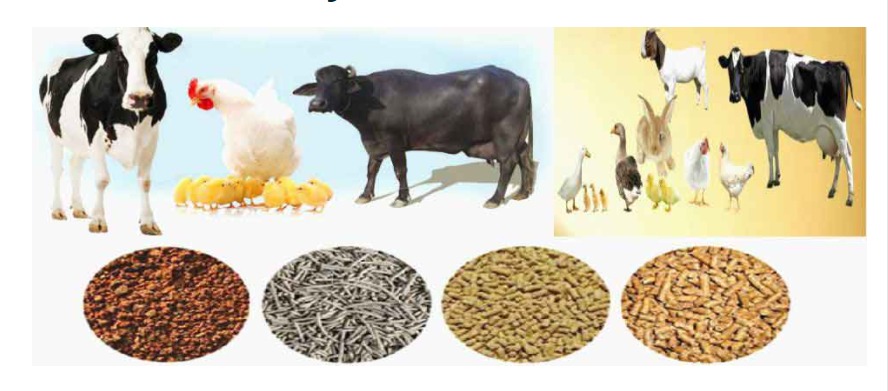Fodder
Fodder (C fodder) or ration (C forage) is any material used to feed livestock (cows, sheep, goats) and domesticated animals (poultry, horses, rabbits, etc…) The majority of feed comes from plant sources. The word fodder is used to denote food provided to animals (including plants that weave and provide a nibble to animals), while pasture or pasture crops are used to identify plants that are used to graze animals.
Feed materials can be divided into two main groups on the basis of their contents of crude fiber and TDN, the first group is the concentrated materials and the second group is the coarse materials.
Concentrates:
Concentrates contain a large amount of net energy per unit weight due to their high content of starch, sugar, protein or fat and low content of crude fiber, which often does not exceed 16%, and they contain an average of 75% TDN on a basis The dry matter is divided into concentrated substances in energy and substances concentrated in protein.
– coarse material
Roughages are large in size and have little net energy per unit weight due to their high crude fiber and sometimes moisture content (more than 16% raw fibres, 50% TDN on average on a dry matter basis). Coarse materials into soft materials and dry materials.
soft rough materials
They contain more than 70% moisture and include:
Pastures: An area of land covered with fodder plants cared for by animals. It is either natural, i.e. not planted by humans, and includes large numbers of weeds, legumes, herbs and shrubs, or planted with the knowledge of a person who chooses their types and fertilizes them and irrigates them with comfort or by machine in the absence of rain. It includes a small number of Pure species or their mixtures.
Silage: It is the material resulting from the desired fermentation of a green fodder crop. When there is an excess of green fodder that increases the needs of animals and the weather conditions are not suitable for drying them, it is preserved and stored in a fresh form to be used in the absence or shortage of green fodder.
Roots: substances rich in carbohydrates in the form of sugars, such as fodder beet, sugar beet, carrots.
Tubers: substances rich in carbohydrates in the form of starch, such as potatoes.
dry coarse material
They contain little moisture, but are rich in raw fibers and include:
Hay: It is the product of drying green fodder crops.
Straw: It is the stem and leaves of plants produced after separating the grains and seeds by threshing such as wheat straw, barley, beans, lentils, peas and rice.
Husks and bran: for grains and seeds, such as rice hulls and cottonseed husks.
Corn firewood: For the remaining part of the corn plants after removing the cobs.
Corn cobs: For the remaining part of the corn cobs after the grains have been scattered.
Reed sucker: It is the remaining part of the sticks after being squeezed.

